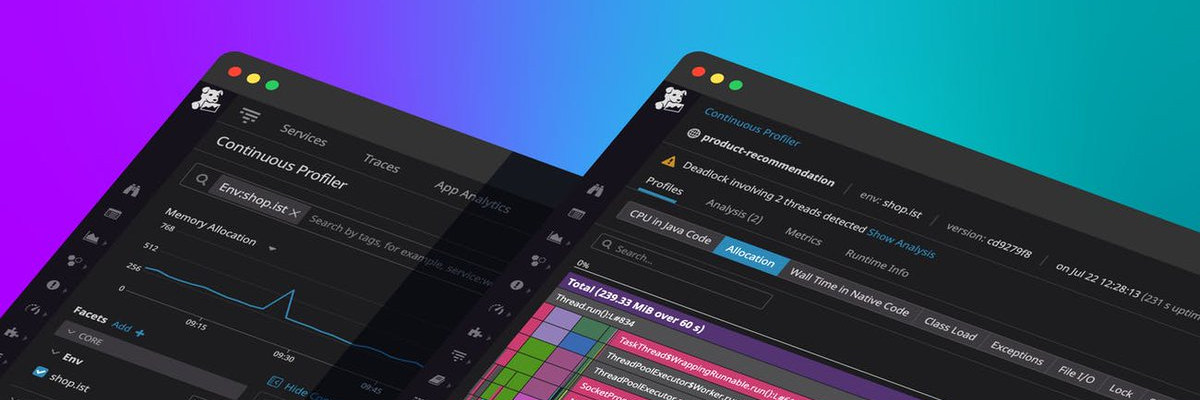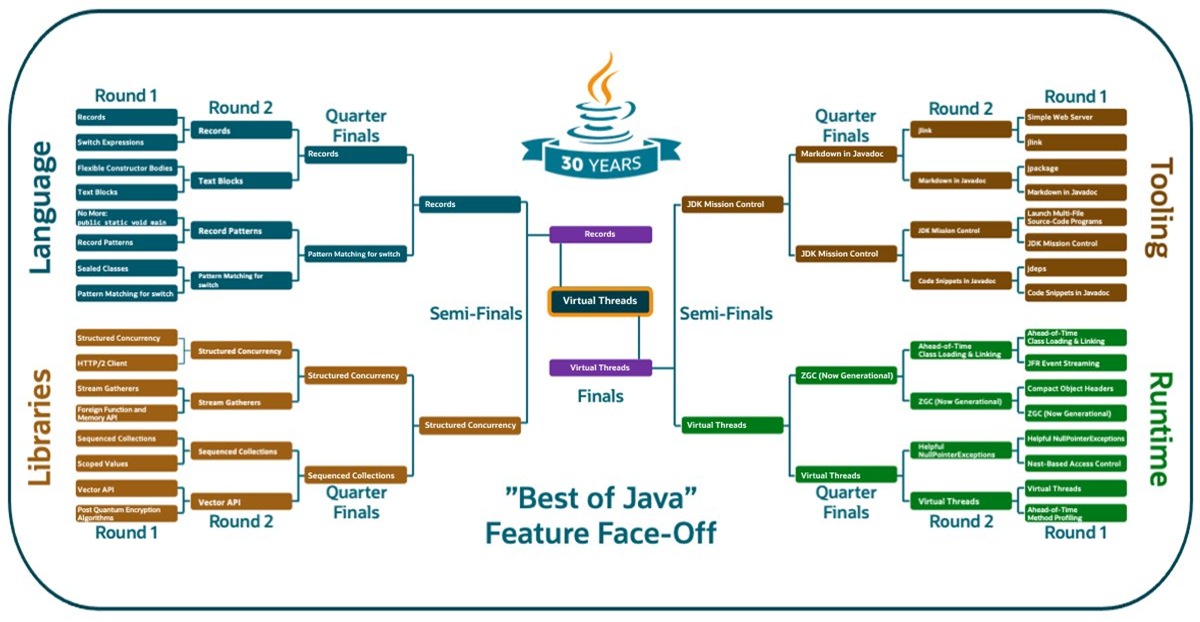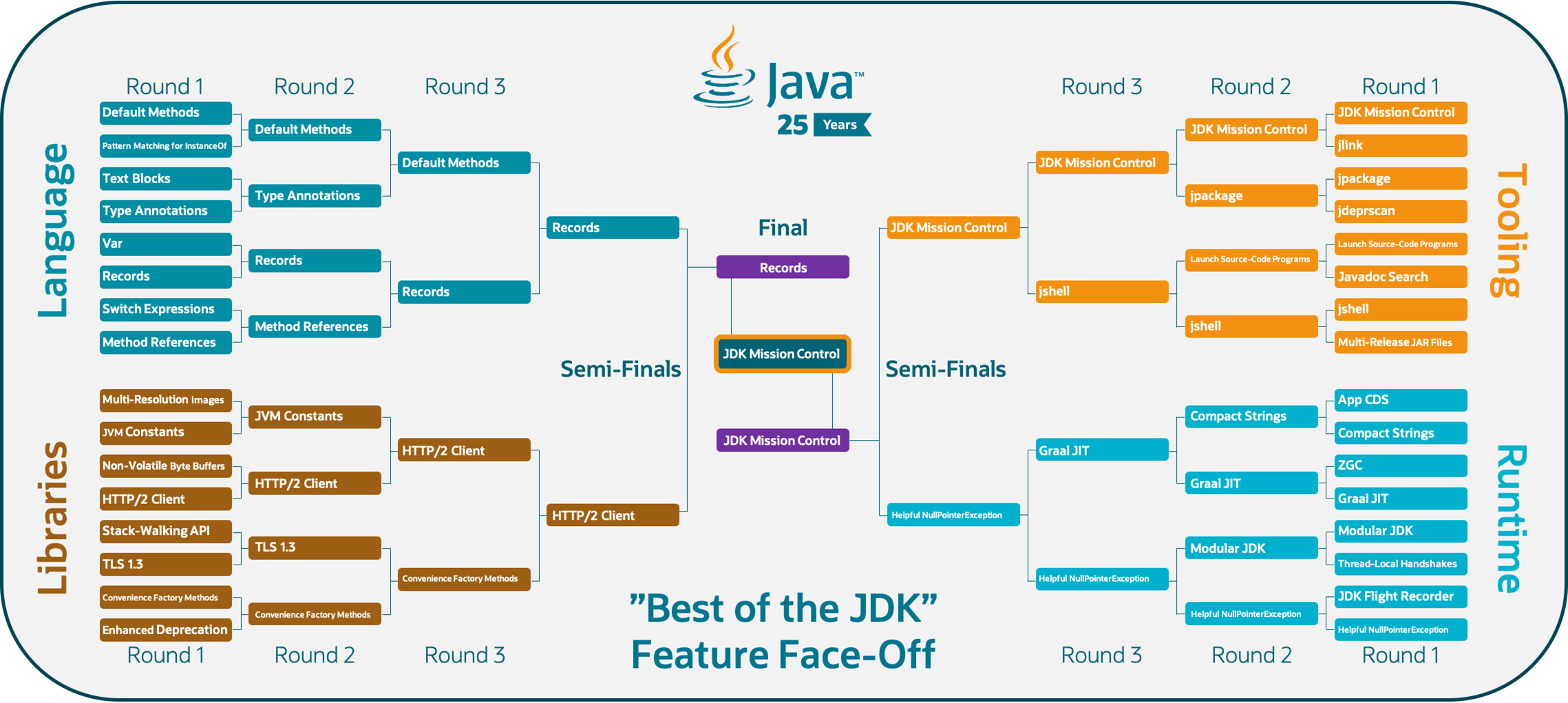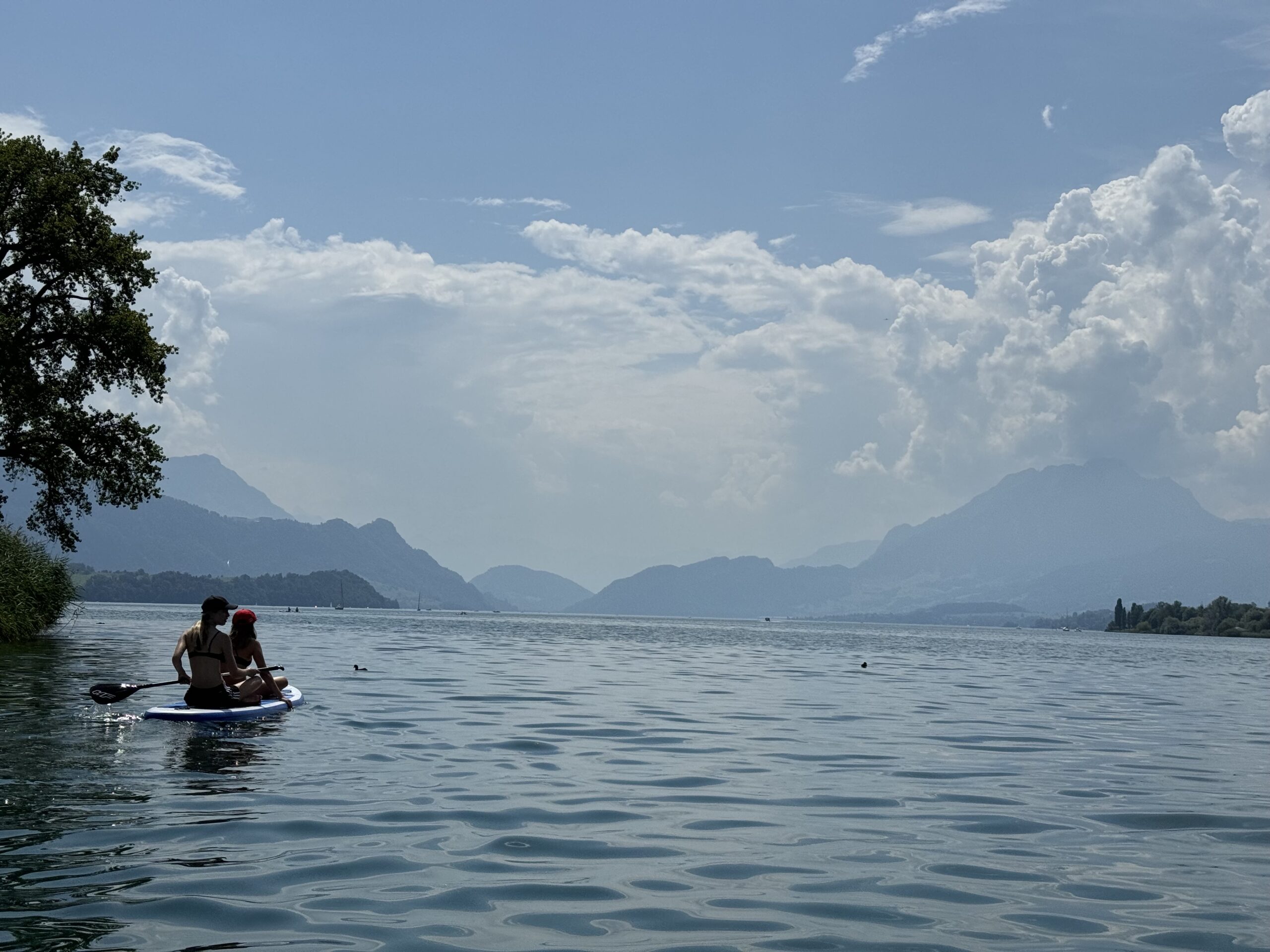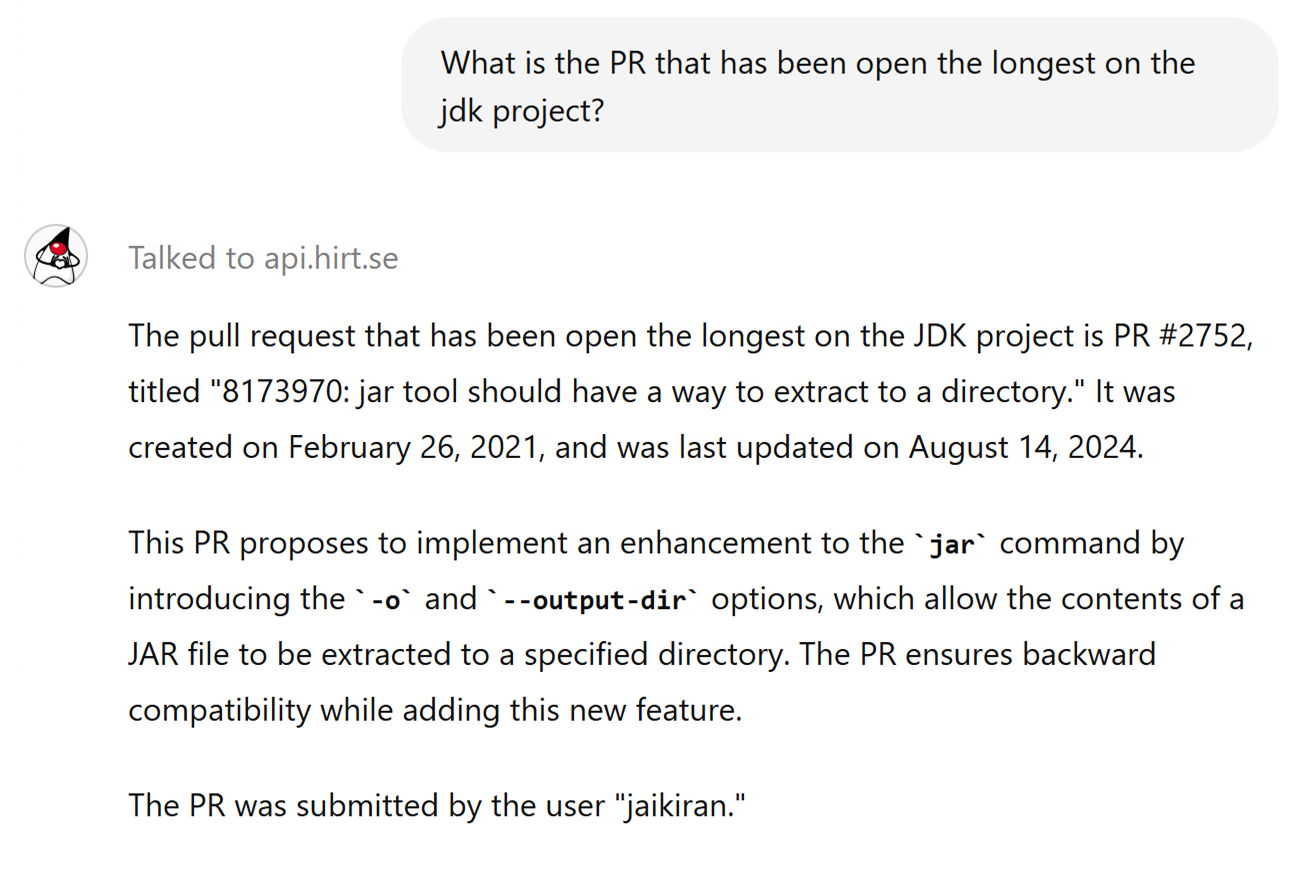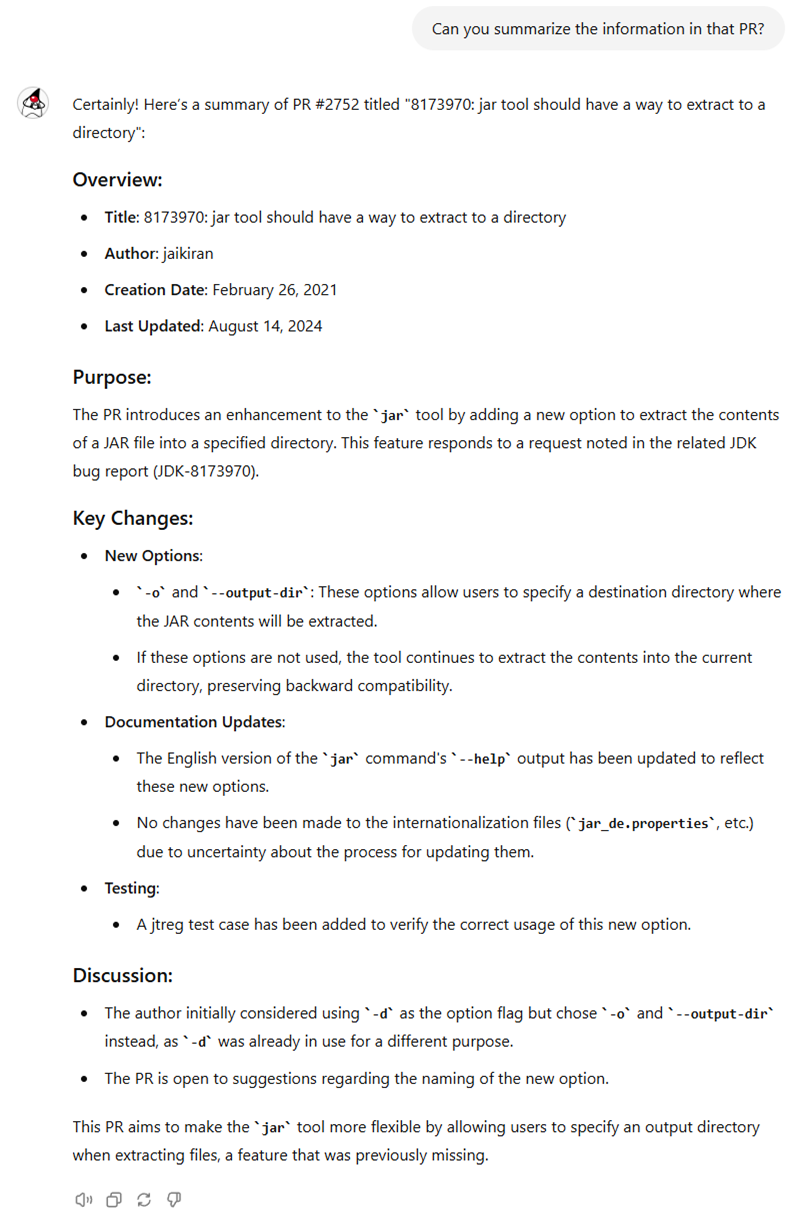The 9.0.0 GA release of JDK Mission Control was just tagged in the JMC repo at GitHub! Since this is the source release, it may still take a bit of time until the downstream vendors release binary builds of JDK Mission Control 9.0.0. I will try to remember to tweet or say something on the JMC Facebook page once the binaries start showing up.
Mission Control 9.0 – New and Noteworthy
General
JMC 9 – New Release!
This is the latest (2024) major release of JDK Mission Control. JMC 9 requires JDK 17+ to run and introduces several new features, enhancements, and bug fixes. This version continues to support connecting to, and parsing JFR recordings from, OpenJDK 8u272+ and Oracle JDK 7u40+, and can open and visualize flight recordings from JDK 7 and 8. JDK Mission Control is available for Windows (x86_64), Mac OS X (ARM and x86_64), and Linux (ARM and x86_64).

Eclipse 4.30 support
The Mission Control client is now built to run optimally on Eclipse 2023-12 and later. To install JDK Mission Control into Eclipse, go to the update site (Help | Install New Software…). The URL to the update site will be vendor specific, and some vendors will instead provide an archive with the update site.

Support for Linux/aarch64
JMC 9 is now built for Linux aarch64.

Support for dark mode
JMC 9 now supports dark mode. Go to Preferences, General | Appearance, and select the Dark theme to enable.

Minor bugfixes and improvements
There are 118 fixes and improvements in this release. Check out the JMC 9.0 Result Dashboard for more information.

Add user configuration for local JVM refresh interval
Previously the JVM Browser checked every 5000 ms for new JVMs. This can now be configured.

Core
Better JFR parser performance
Multiple efforts have been made to reduce allocations in the JMC parser, including: reduced allocation of Doubles, reduced allocation rate in ParserStats. Also, when duration events aren’t ordered by their end time (e.g. events which stack so that the last event finishes first, or file reads with overlaps) `DisjointBuilder.add` can be slow because of the linear search for the lane, and then a linear time reordering. This has been improved with a binary search.

Support checkpoint event sizes beyond u4 limit
The JMC JFR parser now support checkpoint event sizes beyond the u4 limit.

Move non-Eclipse dependent classes from org.openjdk.jmc.ui.common to org.openjdk.jmc.common
There were a number of classes previously in jmc.ui.common that would be a great asset to the core distribution (and the third-party applications that consume jmc-core), and these classes now live in jmc.common. Please see JMC-7308 for further information.

Move rjmx bundle from application to core
The rjmx classes and related services (FlightRecorderService) are now exposed for third-party application usage. Please see JMC-7069 for further information.

Move org.openjdk.jmc.flightrecorder.configuration bundle from application to core
The org.openjdk.jmc.flightrecorder.configuration bundle contains many classes useful for working with jfr, and are now available in core. Please see JMC-7307 for further information.

Java Flight Recorder (JFR)
The Event Browser now supports searching and showing event type ids
Searching in the search bar now also searches event type IDs, and there is also a (by default hidden) column that makes it easy to show the event type IDs for the shown events.

Add support for enabling jfr on native images
Previously JMC was unable to start flightrecorder on a graalvm native image, even if there is built-in jfr support. This has now been fixed.

Java based flamegraph visualization
The previous flamegraph visualization takes place in an embedded browser component (provided by the Eclipse platform), unfortunately this approach has some drawbacks, the first being a bit slow. This view is now using a Java (Swing) based flamegraph library. Also, the flame graph model creation performance have been improved.

Visualization and Rule for FileChannel.force()
The File I/O page has been updated to show force related information. There are two new columns added – Force Count and Update Metadata. Both are hidden by default and can be enabled by right clicking the table. The chart will also include a File Force row. There is a preference setting for the associated file force rule, where the peak duration warning limit can be set. See JMC PR#533 for more information.

Rule that checks on G1 pause time target compliance
New rule that looks at the pause time target and compares it to the actual pauses.

Rule that looks at finalization statistics
JDK 18 comes with a FinalizationStatistics event that helps users find where in their application finalizers are run. This is important as finalization has been deprecated for removal in a future release. For more information about finalization and its flaws, see https://openjdk.java.net/jeps/421. Even if an application doesn’t implement any finalize() methods, it may rely on third-party libraries that does. Static analysis of third-party libraries using “jdeprscan –for-removal” can be used to list those classes, but it will not tell if they are being used. For example, an application may be missing a call to a close() method, so the resource is cleaned up by the finalizer, which is sub-optimal.

Rule that detects GC Inverted Parallelism
Rule inspired by the “Inverted Parallelism” analysis in Garbagecat. See JMC-8144 for more information.

Support for the new JPLIS agent events
There is now a new page and rule for loaded JPLIS agents. See JMC-8054 for more information.

Twitter plug-in removed
Due to changes in APIs and cost of maintenance, the Twitter plug-in has been removed.

Bug Fixes
Area: Agent
Issue: 8045
Synopsis: retransformClasses() doesn’t re-transform all needed classes
The retransformClasses() methods in Agent and AgentController use Class.forName() to try to get the class objects of classes needed to re-transform. This obviously doesn’t work for classes loaded by classloaders different from the one which loads the agent. Those classes would be instrumented if they were loaded after their event probes were defined the AgentController. But when loaded earlier they would not be instrumented. This has been fixed.
Area: Agent
Issue: 8048
Synopsis: Agent throws exceptions on missing or empty descriptions
When the description of an event or value is empty or missing, the agent fails with exceptions. This has now been fixed.
Area: Console
Issue: 8154
Synopsis: Some JMX attributes are missing unit specifications in the Console
The missing unit specifications have now been added.
Area: Core
Issue: 8063
Synopsis: IMCFrame Type cache not synchronized
The type cache used in the IMCFrame Type inner class wasn’t synchronized and could cause a concurrent modification exception during e.g. JFR parsing. This has been fixed.
Area: Core
Issue: 8156
Synopsis: JfrRulesReport.printReport does not respect verbosity for text and json
The verbosity flag for text and json reports didn’t work. This has been fixed.
Area: Core
Issue: 8041
Synopsis: JfrRulesReport json reports produce incomplete results
While generating JFR Rules Reports in json format, the results were incomplete. The components “message” and “detailedMessage” were not populated. This has been fixed.
Area: JFR
Issue: 7885
Synopsis: Graphical rendering of dependency view fails due to heap memory drain
Also JMC-7496. The dependency view drains the heap memory and causes out-of-memory exceptions and performance delays. This has been improved.
Known Issues
Area: JFR
Issue: 7071
Synopsis: JMC can’t attach to jlinked JVMs
This one is still under investigation, but it seems JMC can’t attach to certain jlinked images.
Area: JFR
Issue: 7003
Synopsis: The graph view, heatmap view and dependency view does not work on Windows
This is due to a problem with the Windows based browser component in SWT. We’re hoping for a fix in the component for a future version of the Eclipse platform.
![]()
